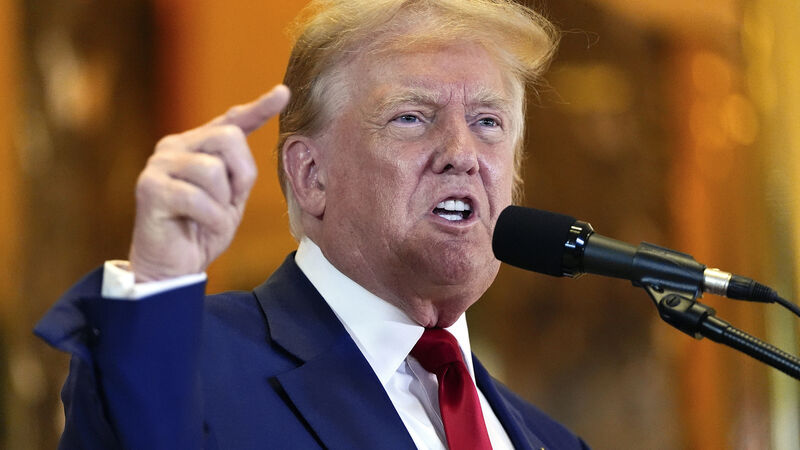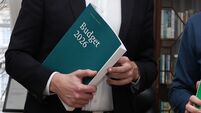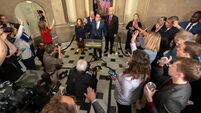David McNamara: Ireland is exposed if geopolitics begin to bite in 2025

Donald Trump’s foreign policy may reverberate back to Ireland.
For investors and economy watchers, 2024 was marked by monetary policy uncertainty and heightened geopolitical tensions.
While major central banks delivered the expected reduction in rates, the 50-100 basis points (bps) of easing was significantly less than markets expected at the start of 2024.
However, these modest cuts should begin to provide a tangible boost to economies throughout 2025.
On the geopolitical front, a succession of major events such as elections and rising tensions in the Middle East failed to spill over to the global economy as the war in Ukraine did in 2022.
However, 2025 may be the year when geopolitics begins to bite on the global economy. While not on the scale of last year, elections are due in Germany, Canada, Australia, and potentially France.
January will see the inauguration of Donald Trump, with a flurry of executive orders expected to reflect his recent protectionist rhetoric. In focus are likely to be the regions with the largest trade surpluses with the US, beginning with China, North American partners and the EU.
Incidentally, the latest goods trade data show Ireland now has one of the largest, and growing, trade surpluses with the US, placing it firmly in the firing line of potential tariff measures against the EU. This reflects Ireland’s trade in pharmaceuticals and agri-food products with the US.
Trump’s foreign policy could also impact ongoing conflicts in Europe and the Middle East, which may reverberate back to the global economy and Ireland.
Elsewhere, China’s response to potential US tariffs and its fiscal policy to combat a weak domestic economy will impact the global economy. The fiscal stimulus initiated in late 2024 is likely to be expanded as authorities battle a damaging deflationary cycle which has hit highly leveraged sectors of the Chinese economy.
As China leaves behind the Year of the Dragon for the Snake in 2025, the sting of a further bout of inflation remains a risk to the outlook in Europe and the US.
While central banks are expected to cut rates further in 2025, these plans may be clipped by still-high core inflation in many countries. On the energy side, though contained for now, an enduring cold snap in Europe this winter would deplete gas reserves and could precipitate fresh inflationary pressures.
In the US, a full-throated Trump 2.0 agenda might also ignite inflationary embers, a risk acknowledged by Federal Reserve chair Jerome Powell.
Finally, the unexpected events which have been so prevalent in the past few years, from the pandemic to conflicts, have the potential to roil markets and economies once again in 2025, which alongside the above ‘known unknowns’, suggest 2025 could be another bumpy year for the global economy and markets.
- David McNamara is chief economist with AIB


